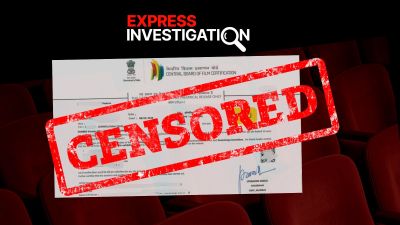Party ideologies, loyalties bite the dust in UP
NEW DELHI, JAN 30: Voters in Uttar Pradesh may well ask themselves this time: "So what's the big difference?"In the bitter battle ...

NEW DELHI, JAN 30: Voters in Uttar Pradesh may well ask themselves this time: "So what’s the big difference?"
In the bitter battle for supremacy in this populous State which sends 85 MPs to the Lok Sabha, political parties have shamelessly poached in rival camps for the coming elections, playing tic-tac-toe with caste alliances to find winning combinations. Never before have party lines been so blurred. Never before has the selection of candidates been so cynical. The great caste cauldron of UP has melted ideology down into cold mathematical sums.
A quick perusal of the nominees of the four main contenders — the BJP, the Congress, the Samajwadi Party and the Bahujan Samaj Party — reveals the extent to which party affiliations and loyalties have ceased to matter in the race for power.
* In Pilibhit, the Samajwadi Party candidate is the former BJP MP from the constituency, Parasuram Ganghwar. The BJP is supporting Maneka Gandhi who is contesting as an Independent this time after a stint as JD MP.
*In Sambhal, DP Yadav is fighting on the BJP symbol as a Jantantrik BSP nominee. A former SP MP, he left Mulayam Singh Yadav to join the BSP which he left a fortnight ago to rejoin the SP which he quit again three days ago.
* In Pratapgarh, the SP candidate is a Congressman, Abhay Pratap Singh, who was earlier the Janata Dal MP from this constituency from 1991 to 1996.
* In Phulpur, the BJP has put up an ex-BSP MLA, Beni Madhav Bind.
* In Allahabad, the SP nominee, Shyama Charan Gupta, was the BJP candidate in the 1991 elections.
* In Amethi, the BJP is fielding Sanjay Singh who left the Congress to join the Janata Dal from which he moved to Chandra Shekhar’s Samajwadi Janata Party before throwing in his lot with the saffron brigade.
* In Shahjehanpur, the former SP MP, Satyapal Yadav, is contesting on a BJP ticket this time. The SP candidate is a Congressman who left his parent party a fortnight ago, Ramamurti Verma.
* In Hardwar, the BSP has put up Ram Singh who won on a BJP ticket in the 1991polls.
* In Baghpat, the BJP candidate, Sompal, was a Janata Dal MP in the Rajya Sabha. In the umpteenth JD split of last year, he joined Laloo Yadav’s RJD which he left last month.
* In Pauri Garhwal, the BSP has fielded a former minister in the Kalyan Singh Government of 1991, Harak Singh Rawat.
* In Kaiserganj, the Congress nominee is a former BJP MP, Laxmi Narain Mani Tripathi.
* In Balrampur, Rizwan Zaheer is contesting on an SP ticket although he continues to be a BSP MLA in the UP Assembly.
The list goes on and on. The same faces, different brand names. So what’s the big deal?
Says Wasim Ahmed, general secretary of the Janata Dal: "The party system is collapsing. Parties and candidates now only look at caste alliances. There is no commitment to political ideology or to the party. Politics is no longer communal or secular, only opportunistic."
The Mandal-Mandir wheel has obviously turned a full circle in UP. Parties are back to mixing and matching caste and creed to hit on the rightcombinations. The process began in the 1996 Assembly elections when the three main contenders, the BJP, SP and the BSP, looked beyond their narrow caste bases at other sections of society for more support.
Although the BSP burnt its fingers badly when its upper caste MLAs defected to join the Kalyan Singh Government last year, the cold logic of numbers is inescapable. Thus both the SP and the BSP have included around 20 per cent upper caste nominees in their lists while the BJP has put in much the same number of backward caste candidates.
Their calculations are based on the simple principle of adding to their core vote by undercutting their rivals as much as possible, even at the cost of encouraging defections by disgruntled ticket seekers from other parties. The gambit worked for the SP and BSP in the State polls. But can it work again in the larger context of a Lok Sabha election?



- 01
- 02
- 03
- 04
- 05




























